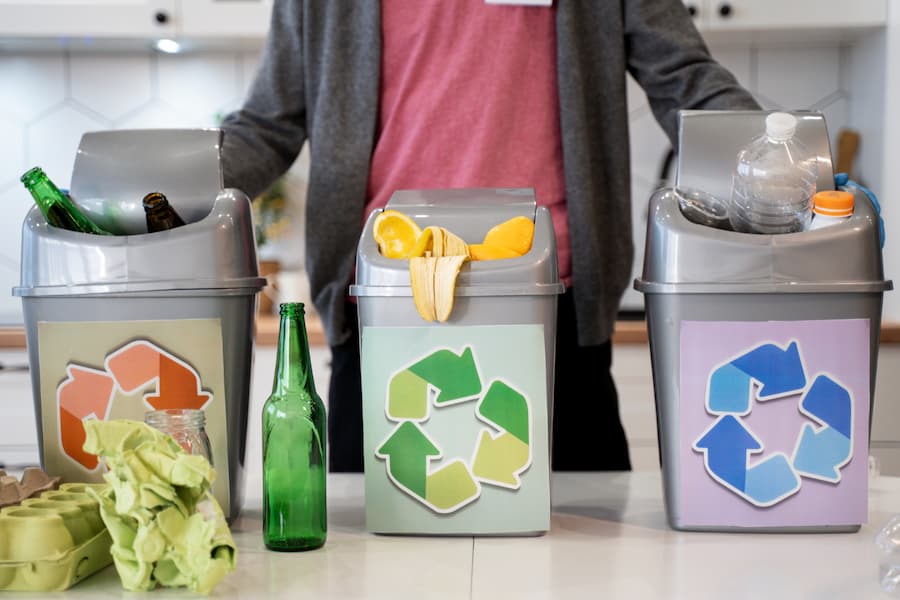Waste Disposal – Daily waste pickup affects city design and environmental health. Garbage management becomes increasingly critical as communities develop and people utilise more resources. Knowing which garbage management strategies are most popular might help us select the best ones. From massive landfills that stretch for miles to sophisticated recycling systems that convert rubbish into valuable goods, each way we dispose of trash is essential. Understanding your options might help you reduce your environmental impact if you’re a homeowner or a company searching for Skip Hire Appley Bridge. Let’s examine waste disposal methods and their environmental impact.
Landfills
Landfills are the primary rubbish disposal method globally. These sites dump household and construction trash. Compaction follows garbage addition. Space is saved, and the environment is protected. Waste accumulates and is covered by soil or other items. Landfills look easy, but they have issues. Breaking down biological stuff without oxygen produces methane gas. This greenhouse gas ruins air quality and causes climate change. Leachate, wastewater from solid waste disposal, is another concern. If not properly managed, this runoff can damage neighbouring land and rivers. Although landfills have issues, they are necessary to handle our growing rubbish.
Incineration: Turning Trash Into Energy
Incineration is a popular waste disposal method. Waste materials are reduced to ash by burning at high temperatures. Burning generates energy, which is fascinating. The heat from burning material creates steam, which powers devices. It reduces garbage and produces energy. Incineration provides benefits but environmental risks. Process emissions must be controlled to reduce air pollution. Communities considering this option weigh its pros and cons. New technologies make burning cleaner and more efficient for garbage management and energy production.
Recycling
Recycling is crucial to trash management. Turning common materials into new goods reduces landfill waste disposal. Recycling paper, plastic, metal, and glass goes beyond cleanup. You conserve wood, water, and rocks. This strategy reduces energy utilisation. Recycling reduces climate-changing greenhouse gas emissions. Reusing instead of buying reduces our carbon footprint. Communities everywhere are starting to use more significant recycling systems. More people are joining as they learn about its benefits. Businesses understand that using safe methods is essential. Many people now use recovered materials in their production methods. Every little bit helps when it comes to saving our world and future generations.
Composting
Composting is a very eco-friendly way to handle organic trash. It turns food scraps and garden waste disposal into healthy dirt. The process includes gathering things that can decompose, such as fruit peels, coffee grounds, and yard clippings. These things decompose naturally due to the action of microorganisms. It decreases trash in landfills and helps improve the dirt in gardens. Composting helps keep plants wet, so you don’t have to water them as often. It also reduces methane pollution caused by food waste disposal in dumps. Composting is a simple and green activity at home or in your community. Anyone can easily make a compost bin, which helps the earth grow better plants. The effects are both quick and lasting for plants and ecosystems.
Other Innovative Waste Disposal Methods
New waste disposal technologies are becoming popular along with the classic ones. One intriguing approach is anaerobic processing. This technique breaks down biological material without air, yielding biogas that may be utilised for energy. Another approach to getting attention is plasma burning. This high-temperature process transforms waste into syngas and slag. It’s practical and decreases harm to the world, giving a clean choice instead of tossing rubbish in landfills. Some communities are trying out zero-waste initiatives. These projects aim to modify how resources are utilised so that all commodities may be reused or recovered, drastically minimising the need for landfills. Finally, 3D printing technology can quickly turn plastic rubbish into new things. As these new concepts evolve, they might fundamentally revolutionise how we perceive trash management.
Pros And Cons Of Each Method
Landfills are straightforward to use and economical, able to manage a lot of rubbish. However, over time, they can produce land and water contamination. The breakdown process creates harmful gases such as methane. Incineration minimises waste and generates energy. However, air pollution and high operating costs are concerns. Recycling saves resources and reduces landfill trash. Not all materials are reusable, and contamination might slow the process. Composting organic waste replenishes soil nutrients. It needs space and might attract pests if neglected. Novel approaches like anaerobic digestion convert waste disposal into biogas through natural mechanisms. They frequently require unique workspaces that may be scarce. Each waste control approach has pros and cons.
Conclusion
Each waste disposal method has pros and cons. The most common garbage disposal method is landfills, which affect the environment over time. Burning garbage generates energy but pollutes it. Composting organic waste and recycling reduce garbage and conserve resources. Anaerobic digestion and waste-to-energy facilities may modify rubbish disposal. Your choice depends on local laws, community needs, and technology. Knowing these garbage disposal alternatives helps Appley Bridge residents and businesses make sensible decisions.
Visit Magazinespot for more informative blogs






